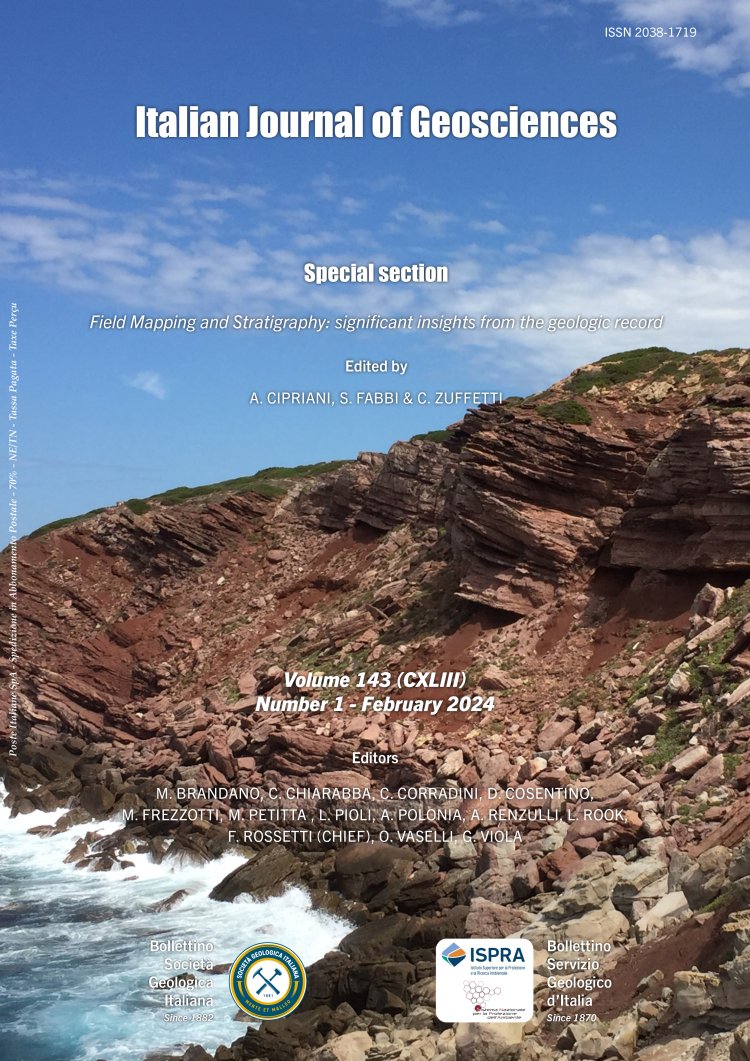
Jurassic to Quaternary reactivation of inherited structures in the central Apennines
Franco Capotorti1 & Cristina Muraro1
1Institute for Environmental Research and Protection (ISPRA) - Department for the Geological Survey of Italy, Via V. Brancati, 48, 00144, Rome,
Italy.
Corresponding author e-mail: franco.capotorti@isprambiente.it
Volume: 143 (2024) f.1
Pages: 37-59
Abstract
The geological mapping carried out for the National Geological Map of Italy Project, at 1:50,000 scale (CARG Project), combined with multidisciplinary analyses, including biostratigraphy, sedimentology and structural geology, has provided new constraints and insights for a better reconstruction of the tectono-sedimentary evolution of a wide portion of the Central Apennines.
Several extensional tectonic phases, from Early Jurassic to Late Miocene p.p., occurred before the onset of Late Miocene-Pliocene p.p. orogenic compression, and the subsequent Quaternary extension, are identified by defining the characteristics and timing of synsedimentary faults.
These tectonic phases are associated with different geodynamic regimes involving contiguous palaeogeographic domains (carbonate platforms and pelagic basins) that are well identified in the study areas. The palaeotectonics is currently recognised by the repeated drowning of parts of the Apennine carbonate platform, the back-stepping of its margins, and variations in the platform-derived detrital supply in adjacent basins.
The well-known Early Jurassic Tethyan rifting caused the drowning of a portions of a huge carbonate platform, generating the long-lasting Latium-Abruzzi Platform and the Umbria-Marche Basin, which host pelagic carbonate platforms (PCPs) characterised by condensed Jurassic p.p. successions. The Bajocian tectonics is observed in the NW sector of the Latium-Abruzzi Platform where the Mt. Giano PCP was formed and later capped up by the prograding Tithonian shallow-water deposits of the Latium-Abruzzi Platform. The tectonic phases of the Late Cretaceous and Paleogene, together with eustatic and biological factors, caused the final drowning of the NW portion of the Latium-Abruzzi Platform and the creation of a complex palaeotopography, with the former margin and the inner part of the platform draped and onlapped by condensed basinal sediments. The Late Miocene extensional tectonics, associated with the peripheral bulge flexure, is mainly documented by the reactivation of inherited faults or new enucleated faults with large downthrows. During this phase, confined foredeep basins were formed, as evidenced by the anomalous relationships between the siliciclastic deposits and the earlier carbonate units. During the Late Miocene-Early Pliocene contractional deformation, caused by the Apennine orogeny, the pre-extisting extensional faults were translated, rotated, dislpaced or, more rarely, positively inverted. Finally, the Quaternary extensional tectonics that formed the intramountain plains may have reactivated some thrust and rooted along inherited faults by “tectonic capture”.
Identifying synsedimentary faults and their timing and downthrows allowed us to separate and correctly evaluate deformation and displacements associated either to the pre-orogenic or to the post-orogenic tectonics.
Keywords
Get Full Text Supplementary Material